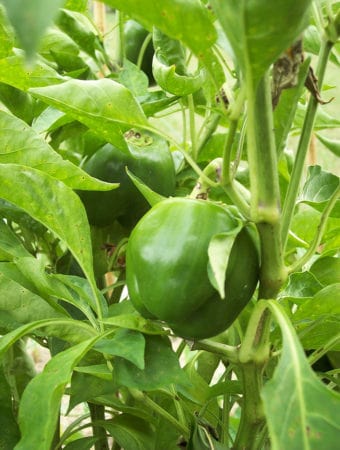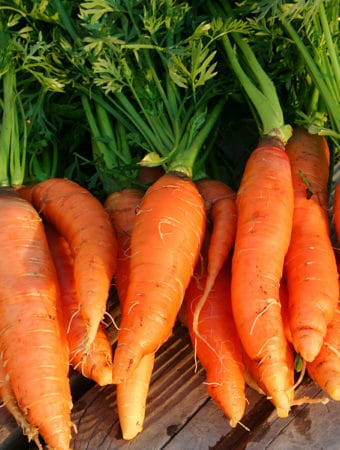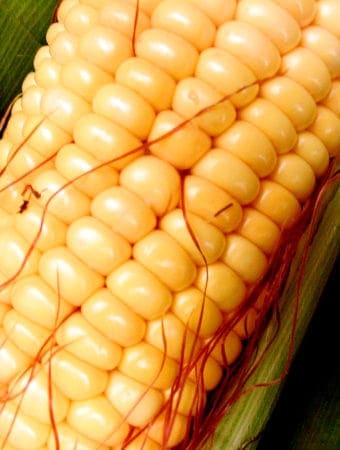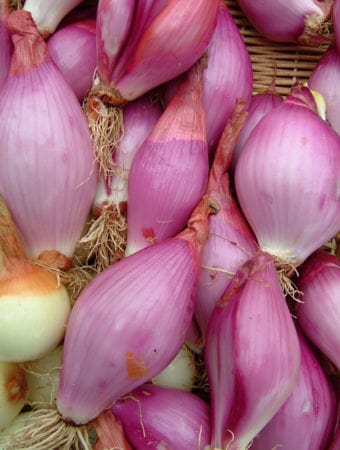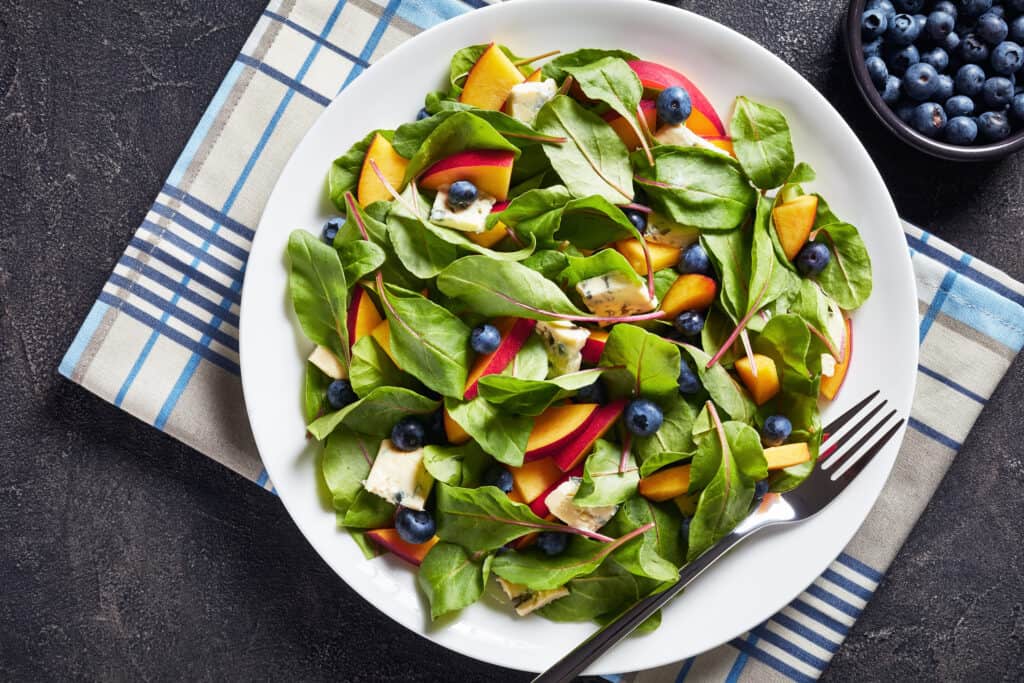
Swiss chard can be served raw or cooked. Swiss chard leaves have a hearty, yet mild spinach flavor. Swiss chard stalks have a delicate, celery-like taste and crunch.
Serve chard greens raw alone or in a mixed green salad. You can also cook chard greens just like spinach.
Swiss chard, chard, silverbeet, spinach beet, leaf beat, sea kale, Swiss beet, sea kale beet, Indian spinach—are all the same vegetables. Don’t get dizzy!
The season for Swiss chard is spring through late fall.

How to Choose Chard
- Select chard with fresh evenly colored green leaves that are moist, crisp, and not wilted. The stalks should be juicy and crisp and unblemished.
How to Store Chard
- Wrap chard unwashed in a damp paper towel and place it in a plastic bag in the vegetable compartment of the refrigerator for 3 to 5 days. Rinse and dry cut the leaves thoroughly before storing.
- Chard leaves can be frozen for up to 6 months in the same way as spinach. Remove the stem and center rib, blanch the leaves, and then chill them in an ice-water bath before freezing.
How to Prepare Chard
- Wash chard carefully before using to get rid of sand and soil trapped in the leaves.
- Cut fibrous chard stalks off near the base and peel off any tough strings.
- The key to success with chard in the kitchen is treating the leaves and stalks like two different vegetables. Chard leaves cook quickly while the wide inner ribs and stalks take time. The two are best prepared separately.
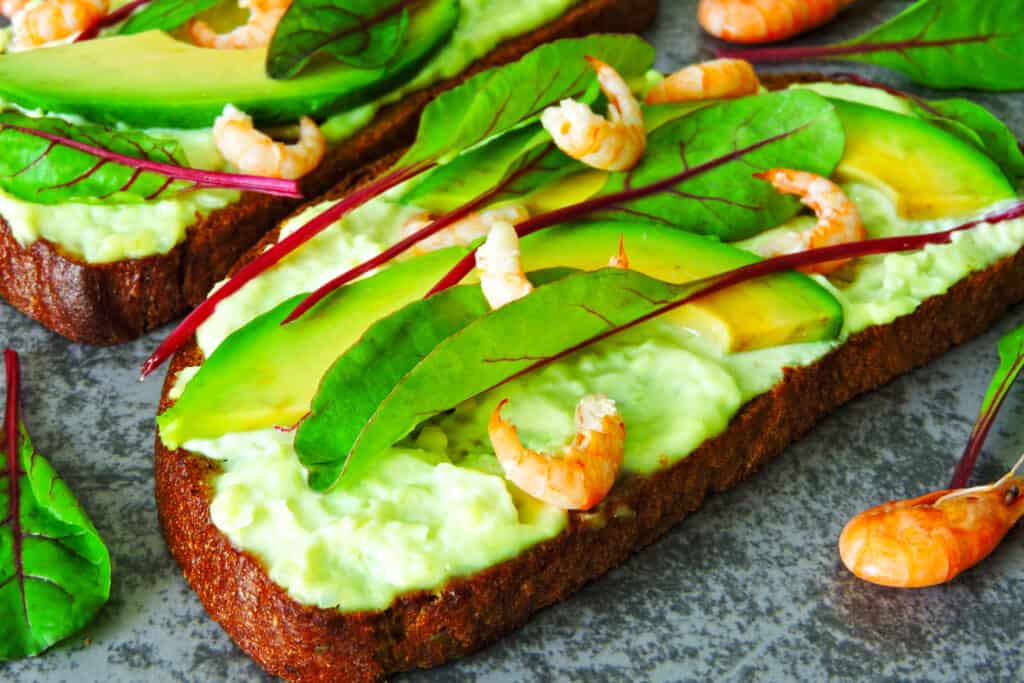
Chard Serving Suggestions
- Serve chard raw or cooked.
- Tender fresh chard leaves are good in salads. Chard thinnings can also be used in salads. Use cooked, chopped chard leaves in recipes calling for spinach.
- Cut or tear the leaves from the stems and use them to line salad bowls or mix them with other torn greens in a salad. Make a layer of chard leaves in a casserole of scalloped potatoes or turnips.
- Sprinkle tender, raw chard leaves with olive oil, garlic, and lemon. Season cooked chard leaves with a piece of salt pork or bacon.
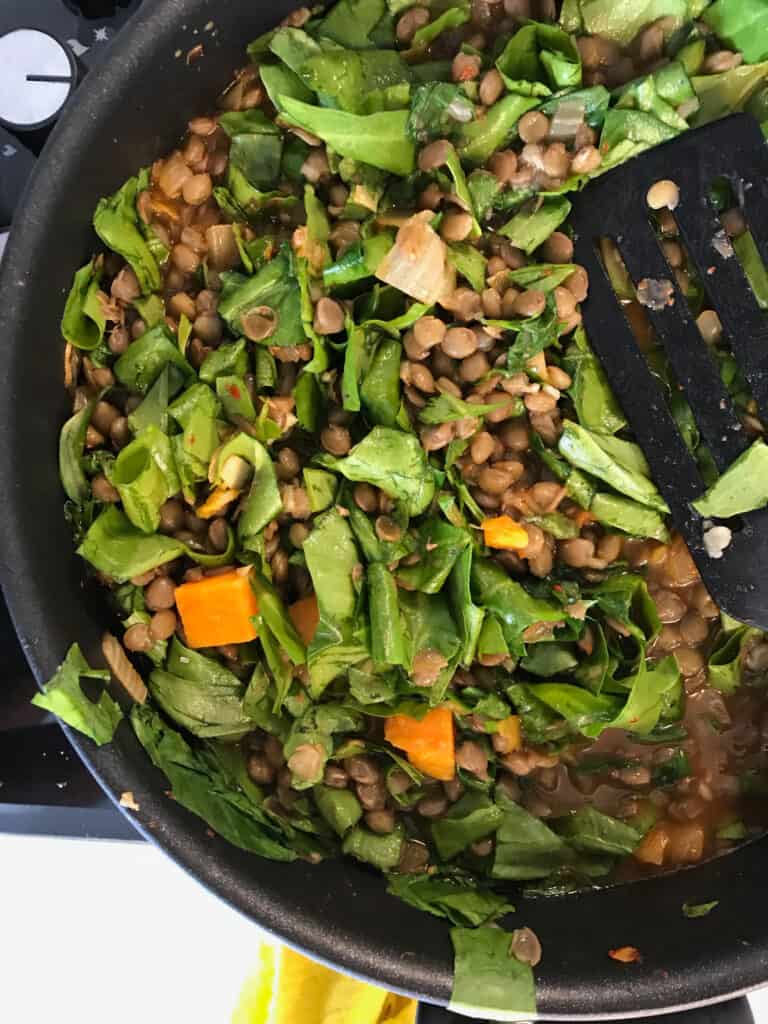
Chard Cooking Suggestions
- Cook chard leaves and stems separately since the ribs take longer to cook. Combine the two after cooking or serve them separately.
- Cut chard mid-ribs and stalks into pieces two or three inches long and simmer them until tender. Serve them hot with butter or chilled with a light vinaigrette. You can cook and serve chard stalks just like asparagus.
- Blanch chard stalks in salted water for 1 or 2 minutes or until tender.
- Simmer sliced or diced stalks in a covered container for 5 to 10 minutes. To simmer whole bunches cut into quarters or individual ribs allow 10 to 20 minutes.
- Steam chard leaves as you would beet greens or spinach. Steam the leaves in just the water that remains on the leaves after washing. Steam long enough for the leaves to wilt, 3 to 6 minutes.
- Steam chard stalks 10 to 20 minutes. Braise stalks in the oven for 20 to 30 minutes. Sauté or stir fry small chard pieces until tender.
- Cook and serve chard stems as you would asparagus or celery. Cooked chard can be served warm or cold. Serve cooked stalks with Mornay or hollandaise sauce or with a vinaigrette.
- Add sliced stalks to soups and stews. (Rhubarb chard makes a colorful thickener to soups and stews.)
- Add diced stalks to cream of potato soup.
- Cut up chard leaves and stalks and use them in stir-fries with sliced water chestnuts.
- Cook chard leaves and stalks in acidulated water to prevent them from darkening during cooking.
How to Simmer Chard
- Wash the chard to be rid of any grit. Separate the leaves and stems and then roughly chop them into strips.
- Bring a large pot of lightly salted water to a boil.
- Cook the stems first until almost tender, about 5 minutes.
- Add the chopped leaves
- Continue to cook until both stems and leaves are tender, another 2 or 3 minutes.
- Drain and serve hot with butter, olive oil, or vinegar. To serve cold, stop the cooking in ice water before adding the dressing.

How to Sauté Chard
- Wash the chard to be rid of any grit. Separate the leaves and stems and then roughly chop them.
- Place olive oil in a large, deep skillet over medium-low heat.
- Add a bit of minced garlic and cook until the garlic begins to color, about 5 minutes.
- Add the chard and cook stirring until the leaves are wilted and tender, about 2 to 5 minutes.
Before adding the chard, you can add other vegetables–bell peppers, onions, zucchini, currants, pine nuts, pumpkins seeds. Add a squeeze of lemon juice before serving.
 How to Braise Chard
How to Braise Chard
- Wash the chard then separate the leaves and ribs and then roughly chop them into strips.
- Slice a large onion and set it into a large skillet or saucepan that can hold all of the chard leaves.
- Simmer the onions in olive oil until they soften.
- Add the chard leaves with salt and pepper to taste, cover and cook for 20 to 30 minutes over medium-low heat stirring occasionally.
- Cook until the leaves are tender.
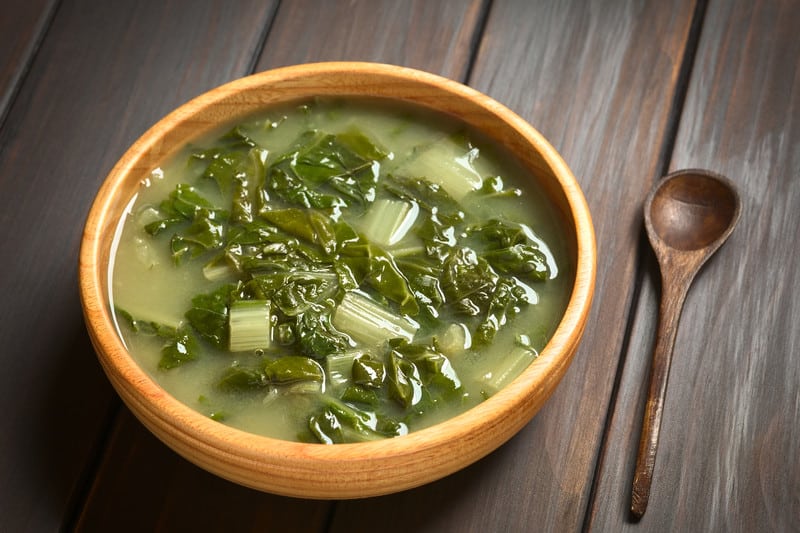
How to Make Chard Soup
- Rinse the 2 gallons of chard leaves to be rid of all dirt and grit. (Press the leaves into a measuring cup to know you have 2 gallons.)
- Cut the leaves crosswise into ¼ inch slices.
- In a wide saucepan, sauté diced onions in olive oil until they are translucent, 2 or 3 minutes.
- Add salt and a bit of minced garlic and 3 tablespoons of nutritional yeast; cook another 5 minutes.
- Add the chard and cover to steam until wilted, stirring occasionally.
- Add 2 cups of boiling vegetable stock and simmer until the greens are tender.
- For a creamy soup, pour the mix into a blender and blend to an even consistency then return to the stove and heat.
- Add grated cheese if you like, then salt and pepper to taste and garnish with basil leaves.
Chard Flavor Partners
- Chard has a flavor affinity for anchovy, capers, cured meats, cured olives, garlic, hot chile pepper, lemon, olive oil, onions, orange and lemon zest, raisins and currants, sweet spices, and vinegar.
Chard Nutrition
- Chard contains vitamin C, calcium, potassium, and iron. Red cultivars contain vitamin A.
- The nutritive values of chard are nearly equal to spinach.
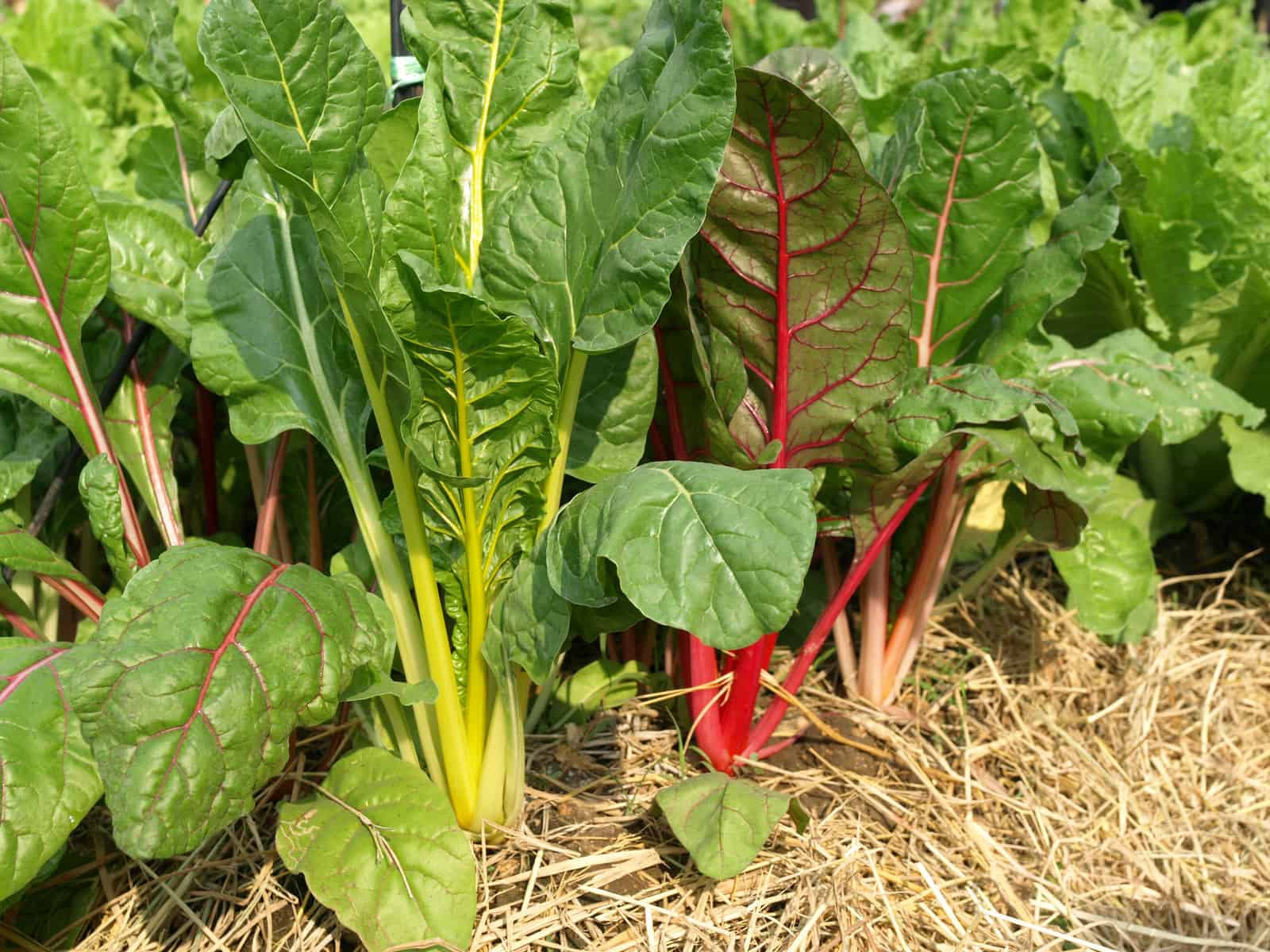
Get to Know Chard
- Chard is a member of the beet family with succulent stems but no large, fleshy beetroot.
- Chard is a cool-season biennial grown as an annual. The plant has large, deep green crinkly leaves and either white ribs and stems or beet red ribs and stems depending upon the variety. “Chards” is the name given to this plant’s stems or stalks.
- Chard leaves are similar to beet greens but larger and wider and flatter. Chard stalks grow from 12 to16 inches (30-40 cm) tall and the leaves to 8 inches (20 cm) across.
- Common chard varieties have silvery celery-like stalks. Rhubarb chard has fat, scarlet stems, and rainbow chard has multicolored stems of chartreuse, pink, bright orange, magenta, cherry, yellow and white. The deeper the color of the chard stalks the stronger the flavor.
- Chard–like beets–were developed from wild sea-beets growing along the Mediterranean Sea. Chard may have grown in ancient Babylon in Persia. Both the Greeks and Romans cultivated chard, and the Romans introduced chard to northern Europe.
- The word chard is derived from carde the Latin and French word for thistle. Both chard and cardoon–which is a thistle plant—are grown for their similar-looking stalks. The Romans used the same word for both plants and the two plants were confused for centuries.
- In the nineteenth century, to end the confusion of cardoon and chard, seed catalogs began adding the word “Swiss” to distinguish chard from the unrelated but look-alike cardoon.
- Chard–like beets–were developed from wild sea-beets growing along the Mediterranean Sea. Chard may have grown in ancient Babylon in Persia. Both the Greeks and Romans cultivated chard, and the Romans introduced chard to northern Europe.
- The word chard is derived from carde the Latin and French word for thistle. Both chard and cardoon–which is a thistle plant—are grown for their similar-looking stalks. The Romans used the same word for both plants and the two plants were confused for centuries.
- In the nineteenth century, to end the confusion of cardoon and chard, seed catalogs began adding the word “Swiss” to distinguish chard from the unrelated but look-alike cardoon.
Cicla in the botanical name for chard, Beta vulgaris var. cicla, is derived from the Latin sicula which refers to Sicily; one of the first places chard was cultivated.
Also of interest:
How to Harvest and Store Chard



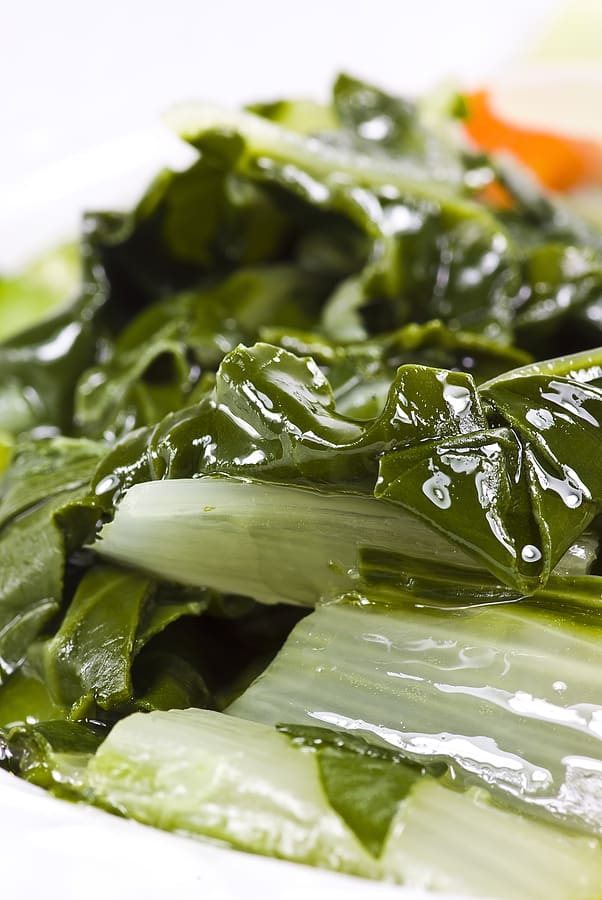 How to Braise Chard
How to Braise Chard
